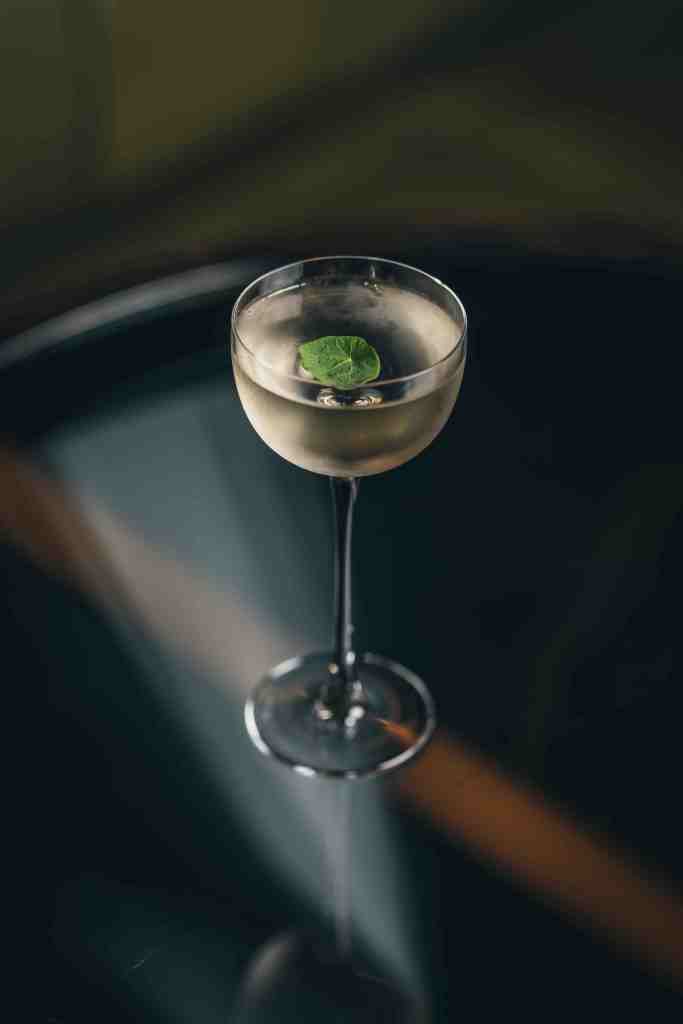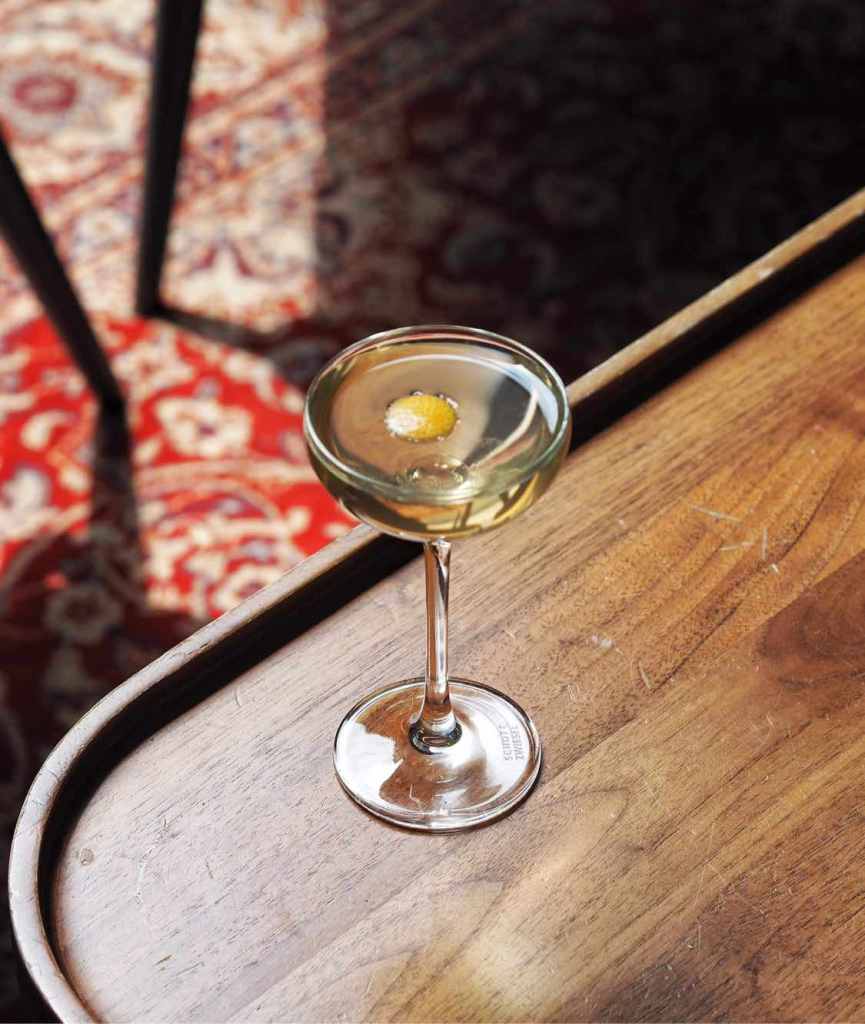Considering its status as the canon’s most iconic cocktail, it’s remarkable that the martini doesn’t have a single agreed upon recipe. Like many great drinks it comes with more of a template than exact specifications, which basically dares us to riff on the formula. Historically, this has meant altering the garnish – swapping the olive for a cocktail onion, perhaps – or adding a dash of bitters. Today, though, a whole generation of bartenders is using the martini to channel their creativity, introducing bespoke ingredients and flavour combinations to this old favourite. But just how many times can you remix the martini and still retain its essential martini-ness? Gamely, I investigate.

The almost overwhelmingly lavish Vesper Bar arrived at the Dorchester in January, boasting generously gilded decor by Martin Brudnizki and a menu from veteran bartender Lucia Montanelli. ‘As soon as we found out the name of the bar, we knew we had to have a signature Vesper on the menu,’ she tells me. ‘But we wanted to create our own version to make it a drink for all.’
James Bond’s signature sling was conceived by Ian Fleming as more of a literary device than a viable recipe, so this is no mean feat. The notoriously difficult-to-balance martini calls for vodka, gin and a slug of Kina Lillet, a long-discontinued aperitif. Montanelli’s version introduces a number of custom ingredients, including the Dorchester’s own old tom gin, vacuum-distilled Forbidden Fruit liqueur and a spritz of citrussy ‘Vesper scent’ to finish. A scant amount of 30-year-old Amontillado sherry brings a savoury hint that keeps the sweeter elements in check and rounds the drink out nicely.
‘We wanted to use our Forbidden Fruit to add a delicate flavour element but as it is a dark liqueur it would affect the colour of the drink, which we wanted to keep clear. So, we went to someone who has a rotary evaporator and with this process it re-distils the liqueur into a clear liquid,’ says Montanelli.

So what does the end result taste like? What’s impressive about this Vesper is that even with the sweeter gin and the grapefruit-y distilled liqueur, it is still recognisably a martini. It’s cold, clear and pleasantly bracing, but more forgiving than the orthodox half pint of London dry with a rumour of vermouth. ‘We wanted to keep the soul of the cocktail, which for the main part is combination of gin and vodka, but also to make it more accessible,’ Montanelli explains.
Here, we see how the formal conventions of a martini can inspire invention – just like haiku, whose rigid structure encourages the poet to think more creatively. The framework of clear spirit, some kind of aromatised or fortified wine, and a little modifier in there to bring the thing together offers near-infinite possibilities.
While the Dorchester’s Vesper pushes the martini in a softer, more affable direction, there are plenty of bartenders out there keen to explore the drink’s harder edges. Traditionally, opting for an olive in your martini makes it a savoury affair, while adding a dash of brine takes the edge off the gin or vodka. At Calvin Eng’s acutely cool Cantonese American restaurant, Bonnie’s in Brooklyn, the bar serves a dirty martini riff made with shaoxing wine and MSG. Monosodium glutamate is a commonplace seasoning in many Asian countries, but in North America it carries the canard that it causes adverse reactions in diners (a response that many commentators attribute to suspicion of immigrant cuisines rather than anything strictly chemical).

By including briny MSG solution in their martini, along with dry rice wine and a generous three olives, the team at Bonnie’s shapes the cocktail to suit their food and makes a bit of a point in the process. When I ask Eng if there’s a confrontational element to the drink, he’s diplomatic. ‘Not necessarily, but we’re definitely trying to educate. We’re proud to embrace the use of MSG to help destigmatise the reputation it currently has by adding it to menu items like our drinks or even desserts.’
This is a great demonstration of how you can rework the martini by dialling its different attributes up or down: zeroing in on botanical complexity, citrussy freshness or slightly saline umami. It proves that you don’t need to introduce un-martini-ish ingredients like fresh juices or bold sweeteners to reinvent this particular wheel.
Back in London, Chris Tanner of Silverleaf at the Pan Pacific hotel serves a ruthlessly stylish vodka martini with essences of wild heartleaf and kombu. ‘At its baseline, a martini is a spirit and vermouth – but over time it’s taken up so many iterations. Something we often discuss as a team is what is a purpose of a drink? For a martini, if it’s booze-forward, brazenly cold and bone dry then it ticks the box.’

‘We were looking to create a serve with the criteria of a dry, earthy stirred-down martini,’ he says. ‘Heartleaf is used a lot in cooking around south-east Asia and when we were looking to create something savoury and interesting, heartleaf just made sense to use. So we paired it with kombu to create the perfect coastal/vegetal aroma.’ Kombu is an edible seaweed which in Silverleaf’s bespoke ‘seaside distillate’ contributes a fresh, marine quality that brings to mind sea spray and oysters. The resulting drink has been on the menu at Silverleaf since the bar launched in early last year and thankfully for martini lovers, it doesn’t seem to be going anywhere.
There’s a cocktail that takes a similar thought process in a different direction at the Cambridge in Paris. The bartenders at this pub/cocktail bar/restaurant in the Marais serve a bijou wet martini called the Delicate Nirvana, made with gin, sake, dry vermouth and Japanese plum wine. The addition of citrus-forward ponzu sauce – more commonly painted onto sushi or yakitori – draws a connecting line between the dirty martini and the fresher dry-with-a-twist style. It is, quite frankly, ingenious.

While having new and novel ways to neck a glass of frosty gin come 5.30ish is definitely nice, the best thing about this global martini renaissance is the way it embraces simplicity. Elaborate vacuum distillations and other mixological backflips happen backstage, leaving you with four or so ingredients, meticulously assembled, clear and reassuring. In moving away from the 2010s novella-length cocktail menus and drinks with a dozen-or-more elements, it’s perhaps natural that bartenders would return to one of the oldest drinks in the book. More than a century after the first martinis landed on our bars, this old standard seems far from played out. On the contrary, it’s only just getting started.







Comments